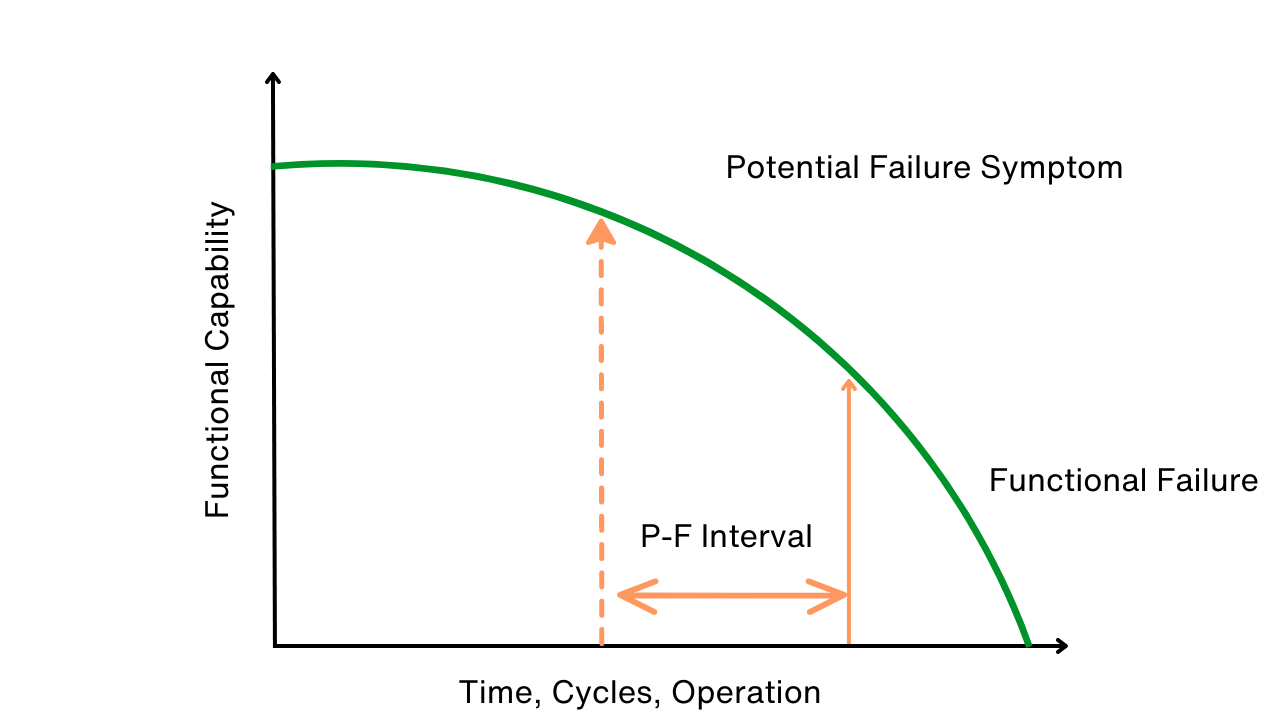Dealing with a Reduced Maintenance Staff
The economic downturn is, or will soon, affect every one of us, which means we, once again, are going to be asked to do more with less. As maintenance departments lose personnel, decisions will have to be made on how to continue to keep operations running smoothly with fewer and fewer people. A shortsighted option is to drop condition monitoring (CM) programs entirely and let machines run to failure, leading to unforeseen machine failures and production difficulties – probably around the same time the economy begins to pick up and the plant is ready to return to full production! A better solution is to combine technology with strategic partnerships to streamline operations, reduce costs and keep the plant running smoothly. Fortunately, the trend toward outsourcing non-essential maintenance functions, including condition monitoring, began some time before the current economic downturn and the technology and procedures are already well developed to facilitate remote monitoring services.
The Trend
Although many facilities have failed to realize the 20:1 or 30:1 return on investment associated with the adoption of predictive maintenance (PdM) programs, it is generally accepted that these ROI metrics are possible and can be achieved. A number of reasons are cited as to why some facilities have achieved these goals while others have not. Some reasons programs fail include: a lack of long-term consistency, inadequate training, misunderstanding the technology’s correct use and functionality, and a failure to properly monitor the financial impacts of these programs.
If you look at the history of condition monitoring (CM), you will note that in the early days (the 1970s and early 1980s), monitoring equipment was expensive and complex and handled by highly trained professionals whose careers were solely dedicated to the technology. In the late 1980s and throughout the 1990s, with the advent of digital computers, the industry came up with lower-cost and less complex data collectors and software. The technology was commercialized and facilities were urged to adopt it and bring programs in-house. Some succeeded and some failed for a variety of reasons, including those mentioned above. But those that succeeded did so because they had a strong service partner. Service partners helped companies keep their CM program going year in and year out, in good times and bad, by providing training, support and technology when necessary. Those that failed either dropped the programs completely or eventually turned to service providers for help.
In the past five years, the industry has taken a sharper turn toward outsourcing partnerships with companies that specialize in condition monitoring. This is partly a response to failed in-house programs, partly due to the general outsourcing trend and partly due to emerging technologies that facilitate outsourcing or partnering. The economic downturn we are experiencing will likely add momentum to this trend.
Outsourcing / Partnering Models
There are a few different models for outsourcing CM functions that depend primarily on the technology being used, the degree of automation required and the available funds for program investment. The most straightforward and popular of these models is also the simplest. In short, a PdM service provider comes to the plant, establishes or audits a database, defines test positions and procedures on machines, and trains a technician or two in the plant to collect data. The service provider is responsible for configuring software, setting baselines and alarms, and analyzing and reporting on data that is collected by the plant’s personnel. The data collector(s) and software are either purchased by the plant, already owned by the plant or included as part of the service contract. Data collected by the plant’s personnel is transmitted via Internet to the service provider. Results or reports are made available by the service provider via a Web client.
This model has a number of benefits. An important one is that if the correct service provider is selected, and if this provider uses good equipment and configures the software/database correctly, then the program may be brought back in house in the future and then outsourced again as conditions change and plant personnel fluctuate. This model is economical because the service provider does not have to accrue travel expenses to collect the data. Rather, a plant technician, who would likely lead the service provider around anyway, is trained to perform this function. The flexibility of being able to bring the program back in-house or outsource it again is arguably the greatest benefit of this type of partnership because it grants plants with the flexibility to own or lease monitoring equipment as a capital expenditure or simply included as part of a service.
The key to any sort of outsourced condition monitoring program is to select a partner that makes sure that you own the data and the database, and that the partner can support you with training if and when you want to bring the program back in-house at a later date. A good partner will define and follow a consistent set of procedures when collecting and analyzing data so that these procedures can be replicated if you choose to bring the CM program in-house.
As far as technology is concerned, Web portals, database replication, Web clients, virtual private networks (VPN) and remote desktops are all available to facilitate the transfer of raw data from the plant to the service provider and reviewed reports and results transmitted from the service provider back to the plant securely over the Internet. In special cases where more in-depth troubleshooting is required, the service provider should have the engineering capacities to come on site and support this work as well.
Continuous Monitoring
President Obama views the current economic crisis as an opportunity to invest in infrastructure to keep the country competitive in the new emerging economy. This is an intelligent and far-sighted strategy that can be applied to a plant’s maintenance plan as well. Improvements in condition monitoring technology and lower costs are making automated/online monitoring of equipment a viable option, and this may be the right time to invest in this improved infrastructure in order to make the plant competitive when the economy picks up again.
The commoditization of specialized sensors has made them plentiful and inexpensive. This makes it possible to permanently mount sensors on machinery and monitor them continuously while removing the need to have an employee walk from machine to machine, testing them with a portable unit. Unfortunately, the cost of installing cables to each of these sensors and running them to a central hub is still prohibitively expensive. In many cases, a solution to the cabling problem is found in wireless sensors or wireless monitoring systems. In the case of wireless sensors, the sensors themselves communicate data to a central hub. This affords a great deal of flexibility and a minimum of cables; however, the cost of individual sensors with transmitters is still quite high. Another drawback to these sensors is that they are often powered by batteries and mounted on machines in inhospitable environments that can damage them.
Wireless systems are those that employ normal off-the-shelf sensors but cable them short distances to a local processor to transmit information (usually via WiFi) to the LAN or WAN. This approach is a great compromise because appropriate sensors can be used for the application (not just the ones that have a transmitter), the sensors can be powered from the local hub, cable runs are not eliminated entirely but are greatly reduced, and the local hub may contain a processor to locally transform the data into information both for alarming purposes and to lower the bandwidth required to transmit the information.
Wireless systems that populate a database with raw data, processed data, alarm information or all of the above can also transmit this information to a service provider via the Internet. The service provider may also be able to connect to these systems, update baselines or alarm criteria, request special tests or otherwise manage the systems remotely. Additionally, a service provider can interpret the data and alarm information and make reports available to the plant via the Internet.
In short, a service provider can utilize an installed monitoring system economically based on wireless technology to remotely monitor, manage and support a monitoring system via the Internet and can make reviewed results and recommendations available over the Internet as well. All of this technology can be integrated into existing control systems as required or desired. Advances in automated diagnostic systems allow them to screen the data and greatly minimize the amount of data that needs to be manually reviewed, thereby greatly streamlining the analysis process. These systems may be installed as part of a monitoring “service,” which then transfers capital cost expenditures into service contracts.
Combined Strategies
Of course, a plant may choose to combine a number of strategies as the plant and economic and business climates evolve. Some critical assets may be good candidates for continuous monitoring, while others can be added to the online system later on. Some assets may be tested using a portable system by in-house technicians; other assets may be tested by a contractor. Some analysis functions may be outsourced to a service partner, while others may be conducted by in-house personnel. At some points, it will make sense to train in-house personnel and take more control of the program when resources are available; while other times, it will make sense to outsource these functions to your service provider. Whatever the case, the key is to have a partner that can work with you in any of these capacities to help keep the program running consistently, month after month and year after year, no matter what the happens with the economy.
Conclusion
Difficult times require smart strategic decisions that consider not only how the company will survive the lean times but how it will fare when the economy picks up again. Outsourcing of non-essential functions is a logical way to deal with shortages of personnel and, in the case of PdM, it is part of a larger trend that began before the economic downturn. As has been suggested in the national press, perhaps this is the right time to do things that will eventually need to get done anyway: restructure, work smarter, partner, improve infrastructure and be prepared to hit the ground running when the economy picks up again.
Alan Friedman is a senior engineer and Nelson Baxter the vice president of diagnostic services at Azima DLI, a global machine condition monitoring company.
Related Articles

Use P-F Intervals to Map, Avert Failures

The RCM Trap

Can You Really Justify Reliability Centered Maintenance (RCM)?

Design for Maintainability





